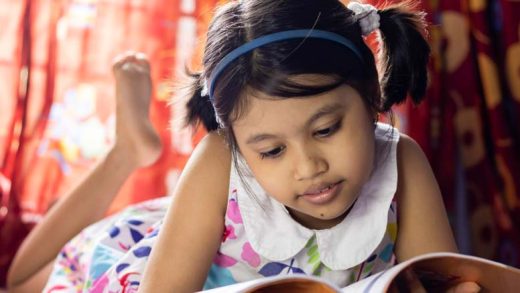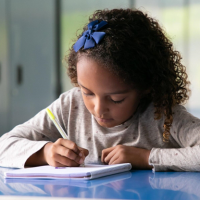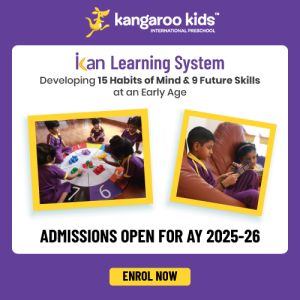Preschool teaching methods differ around the world, but many countries share similar approaches that focus on the overall development of young children. These methods prioritise learning through amusement and social interaction and cultivate a positive attitude towards education.
At Kangaroo Kids International School teaching methods combine various approaches tailored to the specific needs of the children, curriculum goals, and educational institution philosophy.
Why is Preschool Teaching Important?
Preschool teaching plays a vital role in nurturing young children’s overall growth and laying the foundation for their future success academically, socially, and emotionally. The significance of preschool teaching can be observed in several key areas:
- Early Learning and Cognitive Development:
- Social and Emotional Development:
- Preparation for Formal Education:
- Promoting muscle tone:
- Developing a sense of wonder and discovery:
- Closing the educational gap:
Preschool provides a structured environment where children can participate in age-appropriate activities that stimulate their cognitive development. Through play-based learning and hands-on experiences, children acquire essential skills like problem-solving, critical thinking, and language development.
Preschool serves as a social setting where children learn how to interact with their peers and adults. Teachers help cultivate positive social skills, emotional regulation abilities and empathy. Early exposure to social situations establishes a strong basis for building healthy relationships and effective communication later in life.
Preschool serves as a connection between the familiar home environment and the more structured setting of formal education. It acquaints children with the classroom dynamics, daily routines and fundamental academic principles. This smooth transition facilitates their adaptation to kindergarten and subsequent grade levels.
Children can enhance their fine and tough physical abilities by participating in appropriate games and activities. From grabbing a crayon to jumping, these activities contribute greatly to a child’s overall physical development.
Preschool environments provide many opportunities for children to indulge their curiosity and expand their horizons. They are encouraged to explore their interests, ask questions and seek answers through interactive activities. This fosters a love of learning and lays the foundation for a lifelong curiosity.
With timely intervention, preschoolers can identify and overcome potential learning difficulties or developmental delays. This allows for early detection and intervention, reducing the likelihood of future educational gaps.
Preschool teaching is critical to the full development of a child during the critical early years of life. It creates an environment that allows children to explore, learn, and develop critical skills that are building blocks for future learning and personal success.
What Methods Are Used Worldwide?
Kangaroo Kids International School aims to provide a positive and engaging learning environment to support the holistic development of young students. Here are some of the most widely used playgroup teaching methods and strategies in the world.
- Play-Based Learning:
- Montessori Method:
- The Reggio Emilia Method:
- High/Scope Approach:
- Bank Street Developmental Interaction Approach:
- Emergent Curriculum:
- Constructive Curriculum:
- Project-Based Learning:
- Collaborative Learning:
- Integrated Curriculum:
- Responsive Classroom Approach:
- Outdoor And Nature-Based Learning:
Play is an integral part of early childhood education. Play-based learning includes structured and unstructured activities that allow children to explore, experiment and understand the world around them. Through play, children develop socially, emotionally, mentally and physically.
The Montessori Method, developed by Maria Montessori, emphasises self-directed learning in a prepared environment. It has hands-on, sensory-friendly features that satisfy children’s natural curiosity. Children choose activities based on their interests, and teachers act as guides, observing and facilitating rather than teaching.
Originating from Italy, the Reggio Emilia Method focuses on child-led work, collaboration, and the use of the environment as a “third teacher”. It fosters creativity and self-expression and encourages the pursuit of the arts.
The high/scope approach emphasises active participatory learning. It includes a structured process called “planner-doer exploration,” in which children design what they want to do, create activities, and then reflect on their experiences. Adult interaction and hands-on experiences are central to that in this way.
This approach, developed at the Bank Street College of Education, focuses on the social, emotional, and intellectual development of children. Teachers engage in purposeful conversations with children to support their growth. The curriculum is tailored to meet individual needs and interests.
Emergent curriculum is based on children’s interests and experiences. This allows teachers to observe and respond to personal interests and questions that arise in the classroom. This approach is flexible and adaptable to the changing needs and interests of children.
Constructive curriculum involves deliberate planning of developmental aspects of children. It includes a balance of child-initiated and teacher-directed activities, with a focus on hands-on experiences, social and emotional development, and language learning.
Project-based learning involves the in-depth exploration of a subject or topic. Children participate in extended projects, asking questions, exploring and making presentations. This approach encourages critical thinking, problem solving and collaboration.
Collaborative learning involves group activities in which children work together to achieve a common goal. Develops teamwork, communication skills and a sense of community. Collaborative learning can be embedded across disciplines and activities.
An integrated curriculum connects courses through a specialised topic or project. This approach helps children see how knowledge is connected and encourages an overall understanding of concepts.
It prioritises the creation of a welcoming and inclusive classroom community. It champions the value of social-emotional learning, cooperative learning, and the cultivation of self-control. By incorporating activities like morning meetings, this approach fosters a supportive and nurturing atmosphere.
It ventures beyond the traditional classroom walls and embraces the benefits of natural surroundings for children’s education. This approach promotes physical engagement, sensory exploration, and a deeper understanding and appreciation of the natural world.
The teaching methods for nursery classes demonstrate a universal recognition of the significance of early childhood education in building the groundwork for later academic and personal growth. These methods have been carefully crafted to meet the varied needs and interests of young children, while also instilling a passion for learning and fostering a favourable view of education.









